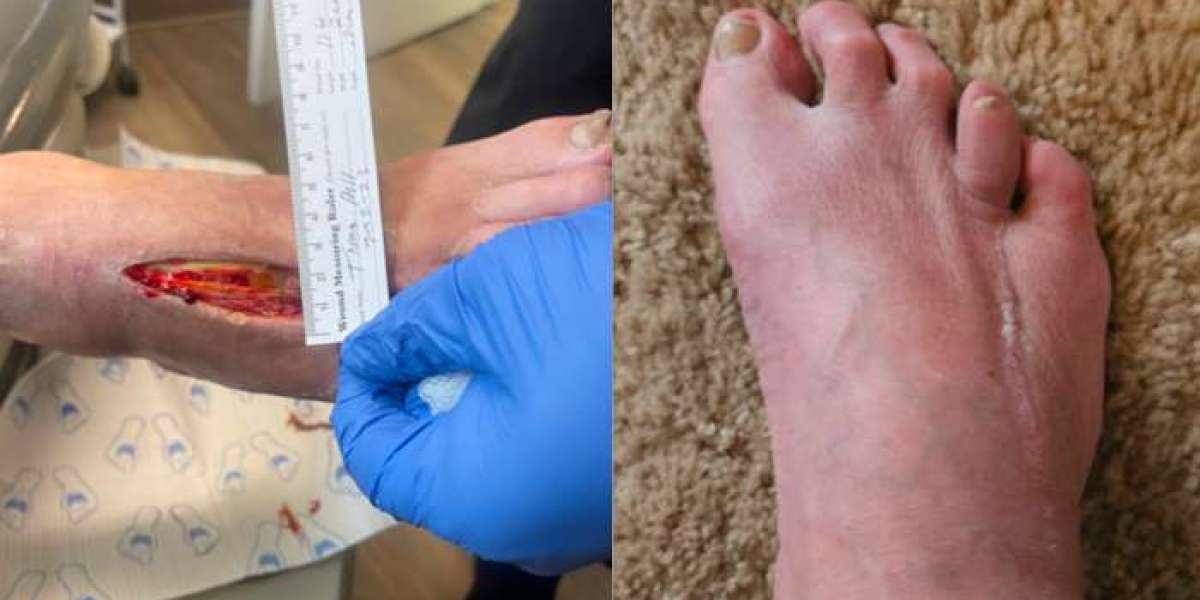Orthopedic injuries and chronic wounds are among the most challenging medical conditions to treat. Traditional treatments, such as skin grafts, synthetic dressings, and surgical interventions, often result in slow healing, increased complications, and long recovery periods.
This is where amniotic tissue allografts are making a significant impact. Derived from the amniotic membrane of the placenta, these biologically active grafts provide a natural and effective solution for tissue regeneration. They are rich in growth factors, collagen, and anti-inflammatory properties, making them ideal for both orthopedic applications and wound care.
What Are Amniotic Tissue Allografts?
A Natural Solution for Healing
An amniotic tissue allograft is a biological transplant derived from the amniotic membrane of the placenta, which is voluntarily donated after a healthy birth. The amniotic membrane is packed with regenerative properties, including:
✅ Growth factors that stimulate tissue repair
✅ Collagen for structural support in healing tissues
✅ Anti-inflammatory cytokines that reduce swelling and pain
✅ Antimicrobial properties that help prevent infections
These properties make amniotic tissue allografts highly effective in both orthopedic treatments and wound care, where they accelerate healing, minimize complications, and improve overall patient outcomes.
How Amniotic Tissue Allografts Are Used
Doctors use amniotic tissue allografts in various medical applications, including:
✔ Orthopedic surgeries – To enhance healing after joint, tendon, or ligament repairs.
✔ Wound care – To treat chronic wounds such as diabetic ulcers and pressure sores.
✔ Burn treatment – To reduce scarring and promote skin regeneration.
✔ Sports injuries – To improve recovery in athletes suffering from musculoskeletal damage.
✔ Ophthalmology – For corneal healing and eye injuries.
Now, let’s explore how amniotic tissue allografts are improving outcomes in orthopedic medicine and wound care.
Amniotic Tissue Allografts in Orthopedic Treatments
1. Faster Recovery After Orthopedic Surgery
Orthopedic procedures, such as joint replacements, ligament repairs, and spinal surgeries, require extensive healing periods. Traditional treatments rely on the body's natural healing process, which can be slow and inconsistent.
By using amniotic tissue allografts, surgeons can:
✔ Enhance tissue regeneration at the surgical site
✔ Reduce inflammation, leading to less pain and swelling
✔ Improve tendon and ligament healing, reducing the risk of re-injury
Studies show that patients receiving amniotic tissue allografts experience faster recovery times compared to those relying solely on traditional healing methods.
2. Improved Outcomes in Sports Medicine
Athletes suffering from ligament tears, tendon injuries, and cartilage damage benefit significantly from amniotic tissue allografts. Unlike synthetic grafts, these allografts contain naturally occurring growth factors that promote faster healing and reduce scar tissue formation.
This makes amniotic tissue allografts an effective solution for:
? ACL and meniscus repairs
? Rotator cuff injuries
? Tendonitis and ligament sprains
For professional athletes, this means faster return to activity with a lower risk of reinjury.
3. Non-Surgical Treatment for Joint Pain
Chronic joint pain caused by osteoarthritis, rheumatoid arthritis, or cartilage deterioration often leads to pain management through steroid injections or eventual joint replacement surgery.
Instead of surgery, doctors are now using amniotic tissue allografts as an alternative therapy. These grafts help:
✔ Reduce inflammation in arthritic joints
✔ Stimulate cartilage repair
✔ Delay or prevent the need for surgery
This provides patients with a natural, regenerative treatment option for long-term joint health.
Amniotic Tissue Allografts in Wound Care
1. Effective Treatment for Chronic Wounds
Chronic wounds, such as diabetic ulcers, pressure sores, and venous leg ulcers, are notoriously difficult to heal. Traditional wound care methods—such as gauze dressings and antibiotic treatments—often fail to promote proper tissue regeneration.
Amniotic tissue allografts work by:
✔ Stimulating new cell growth in slow-healing wounds
✔ Reducing inflammation to speed up tissue repair
✔ Protecting the wound from infections
Patients with diabetic foot ulcers who receive amniotic tissue allografts often experience higher healing rates and lower risk of amputation.
2. Lower Risk of Infection and Complications
One of the major risks of open wounds and post-surgical incisions is infection. Amniotic tissue allografts provide a protective barrier that helps:
✔ Reduce bacterial growth
✔ Prevent wound contamination
✔ Lower the need for antibiotics
This makes them particularly useful in patients with compromised immune systems or those recovering from major surgeries.
3. Minimizing Scarring in Wound Healing
Unlike traditional wound dressings, which only cover the wound, amniotic tissue allografts actively promote scar-free healing. The collagen matrix in the allograft:
✔ Supports proper tissue formation
✔ Prevents excess scar tissue build-up
✔ Enhances cosmetic outcomes
This is particularly beneficial for burn victims and post-surgical wound care, where minimizing scarring is a key concern.
Why Doctors Prefer Amniotic Tissue Allografts
Doctors are increasingly choosing amniotic tissue allografts because they offer:
✅ Biocompatibility – No risk of rejection or allergic reactions.
✅ Natural anti-inflammatory properties – Reduces swelling and pain.
✅ Faster healing – Promotes tissue regeneration.
✅ Lower infection rates – Acts as a natural antimicrobial barrier.
✅ Minimized scarring – Helps wounds heal with less fibrosis.
These benefits make amniotic tissue allografts a superior alternative to traditional treatment options in both orthopedic and wound care applications.
Future of Amniotic Tissue Allografts
As medical research and technology advance, amniotic tissue allografts will continue to play a crucial role in regenerative medicine. Emerging applications include:
? Personalized allografts – Tailored to individual patient needs.
? Enhanced preservation techniques – To improve graft longevity and effectiveness.
? Expanded use in stem cell therapy – For even greater regenerative potential.
With continued innovation, amniotic tissue allografts will likely become the gold standard for orthopedic and wound care treatments.
Conclusion
Difficult-to-heal wounds and orthopedic injuries can be frustrating, painful, and slow to recover from. Traditional treatments often fail to provide the rapid, natural healing that patients need.
Amniotic tissue allografts offer a breakthrough solution, delivering faster healing, reduced pain, lower infection risks, and improved tissue regeneration. Their use in orthopedic medicine and wound care is rapidly expanding, providing new hope for patients with chronic injuries.



